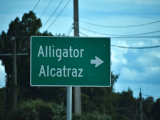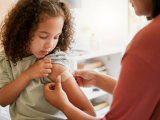Aug 29, 2011
H1N1 still transmitted during 1-week school closing
After Chicago officials closed an elementary school in April 2009 for 1 week after just one student was reported to have pandemic H1N1 flu, a fourth of students' households experienced pandemic flu, raising the possibility that the disease spread before symptoms appeared. Writing in Emerging Infectious Diseases, scientists from the US Center for Disease Control and Prevention (CDC) reported that CDC and local health officials surveyed 170 households after the school was closed Apr 29 through May 5, 2009, following a case on Apr 28. Thirty-nine (23%) households, representing 181 people, reported 58 illnesses that met the definition for acute respiratory illness, of which 37 (64%) also met the definition for influenza-like illness (ILI). Of 57 household members with available data, 42 (74%) were students at the school. Thirty-four patients (60%) reported onset of symptoms before or on the day of school dismissal. Five households (13%) reporting illness had no sick students who attended the school. In 4 of 11 households that reported two or more ILI cases, students became ill before nonstudent household members, but onset dates did not suggest student-to-nonstudent transmission in the other 7 households. The authors say their results indicate that at least some illness in households "originated from sources other than the school and support the approach of considering school dismissal only in conjunction with other community mitigation strategies."
Sep Emerg Infect Dis report
UK study finds no increase in GBS following H1N1 vaccination
British researcher found no increased risk of Guillain-Barre syndrome (GBS) among UK recipients of the pandemic 2009 H1N1 influenza vaccine, which was largely an adjuvanted version of Pandemrix, according to a study in Vaccine. The researchers identified 327 GBS cases during the H1N1 vaccination period from neurologists, a patient support group, and hospital statistics. GBS is an autoimmune disorder that affects the nervous system. The group found that 37 GBS patients received the pandemic vaccine in the study period, of whom 9 developed GBS within 6 weeks of vaccination, for a relative incidence of 1.05 (95% confidence interval, 0.37 to 2.24], or no increased risk. The authors conclude, "This study found no association between H1N1 (2009) pandemic vaccine and GBS and has the power to exclude large risks."
Aug 27 Vaccine abstract
Children's study compares factors that affect 2009 H1N1 vaccine response
England's 2009 H1N1 vaccine campaign in the fall of 2009 offered researchers a chance to compare two vaccines in children, explore a host of external factors on antibody response, and record vaccine reactions. The study in Vaccine, conducted September through December 2009, involved 943 children ages 6 months to 10 years who received two doses of either GlaxoSmithKline's oil-in-water ASO3B-adjuvanted split-virus vaccine or Baxter's whole-virus vaccine. Blood samples were taken on the day of the first dose and at 21 days, plus or minus 7 days, after the second dose. Researchers found that hemagglutination-inhibition titers were 60% higher in both vaccine groups in kids who had a fever after vaccination and 29% lower in those who had previously been immunized against seasonal flu. Early use of antipyretics didn't affect immune response. Post-vaccination titers were higher in children who had longer intervals between doses and in those with prior infection. Children with atopy who received the adjuvanted version were more likely to have vaccine reactions. Researchers said that the lower immune response they saw in kids who were vaccinated against seasonal flu should be investigated further.
Aug 27 Vaccine abstract


















